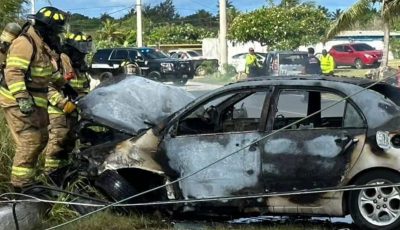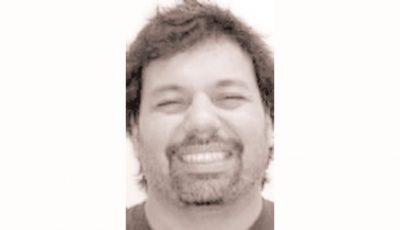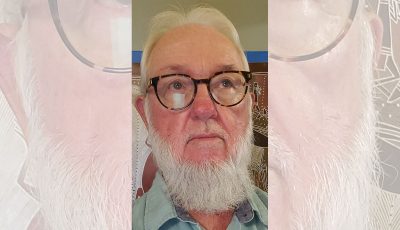Jury deliberations begin
Prosecution plays Romero’s 911 call again
The six jurors began deliberations yesterday afternoon in the jury trial of Joseph A. Crisostomo, a 40-year-old habitual offender accused of kidnapping, raping, killing, and robbing bartender Emerita “Emie” R. Romero on Feb. 5, 2012.
The jurors were excused late yesterday at 5:50pm and were ordered to return today, Thursday, at 8:15am to continue deliberations.
The deliberations started shortly after the prosecution and the defense counsel completed their closing arguments and Superior Court Associate Judge Joseph N. Camacho gave the jury instructions.
In the government’s closing arguments, assistant attorney general Margo Brown-Badawy said the mass of evidence they have presented proves beyond reasonable doubt that the only verdict the jury must come up with is guilty.
In wrapping up the government’s closing arguments, Brown-Badawy and interim chief prosecutor Brian Flaherty again played the harrowing 911 call recording where Romero is heard crying, screaming, and begging for her life, while a male voice that witnesses identified as Crisostomo could be heard saying “sorry” and “calm down.”
In her closing arguments, defense attorney Janet H. King said that Romero’s murder remains unsolved and that the prosecution failed to prove its case beyond a reasonable doubt. She urged the jurors to look at all the evidence and come up with only one verdict—not guilty.
The courtroom was jam-packed yesterday, filled mostly with lawyers and police officers. The benches behind the prosecution were fully occupied. Romero’s younger sister, Estrelita Relata, Godfather’s Bar owners Scott Dottino and Ron Biggers, and some of Romero’s friends were present. Attorney General Joey San Nicolas also watched the arguments.
Behind the defense’s table were Crisostomo’s sister, Annie, his other sister and a sister-in-law, some lawyers, and law enforcers.
The jurors will decide the charges of first-degree murder or the lesser included offense of second-degree murder, kidnapping, sexual assault in the first-degree, and robbery.
Camacho will decide the misdemeanor charges of assault and battery and disturbing the peace.
In the government’s closing arguments, Brown-Badawy said that Romero was at the wrong place, in the wrong car, at the wrong time.
Because of that, Brown-Badawy said that Romero, a mother of two, was kidnapped, brutally murdered, and robbed by Crisostomo, who was just looking for a victim in the early morning hours of Feb. 5, 2012, in Garapan.
She said the evidence showed that Crisostomo raped Romero, strangled her with a pair of leggings, and discarded her body like garbage to rot in a small room at the abandoned La Fiesta Mall.
Brown-Badawy said Romero could have been anybody else in the community, whether someone’s sister, friend, or relative.
“To be at the wrong place at the wrong time is something that anybody is scared of,” she said.
Brown-Badawy then played a brief portion of the 911 call, in which Romero could be heard crying and begging to be freed. The prosecutor said the 911 call showed just how terrified Romero was as she begged for her life.
Brown-Badawy said the phone records show that on Feb. 5, 2012, at 2:48 am, Romero called a taxi driver because she wanted to proceed to the house of her boyfriend, Taj Van Buuren, in Chalan Piao.
At 2:55am, the taxi driver called Romero, asking her where she was because he was already there to pick her up. The victim replied that she already got into the taxicab, Brown-Badawy said.
At 2:57am, Romero realized she was in a wrong car, called the taxi driver back, and asked what’s his telephone number.
At 2:58:17 Romero called the taxi driver again. It was this call when the driver heard that something happened to Romero in the car. Five minutes later, Romero called 911.
Brown-Badawy said that police officer Sandy Hambros and other police officers searched for Romero at Mariana Resort and in Marpi but could not find her.
Brown-Badawy said that at 6am, Crisostomo, using Alicia Kintaro’s cellphone, called Kintaro at her home after dumping the victim’s body at La Fiesta, asking her to pick up his sister, Annie, Annie’s boyfriend Cheyenne Sablan, and Albert Deleon Guerrero at Piano’s Poker in Garapan. Crisostomo reportedly told Kintaro that he could not pick up the three as he was busy.
Brown-Badawy said that Crisostomo was “indeed busy” getting rid of Romero’s body at that time.
The phone records show that when the 6am call was made, the originating tower cell was at the Palms Resort, which is right across La Fiesta Mall, according to Brown-Badawy.
On Feb. 7, 2012, Federal Bureau of Investigation agents found Romero’s body at La Fiesta Mall.
The prosecutor said that on Feb. 10, 2012, investigators played the 911 call and police detective Roque Camacho, who was just talking with Crisostomo three hours earlier, identified the male voice in the recording as Crisostomo.
Brown-Badawy said that detective Elias Saralu, who also listened to the 911 call, was 100 percent sure the voice was that of Crisostomo, who worked with them for several years as a confidential informant.
Brown-Badawy said that investigators also played the 911 recording for Joanne Castro, who was Crisostomo’s common-law wife for 17 years.
She said Castro was disgusted and had goose bumps all over her body after identifying Crisostomo’s voice.
The prosecutor urged the jury to look at all the evidence: hair, footprints, DNA, 911 call, and Crisostomo’s own words.
Brown-Badawy said that a hair strand recovered from the front passenger side seat of a rental car that Crisostomo was driving between Feb. 4 and 5, 2012, matched Romero’s DNA. This tells that Romero was in that car, she said.
She also cited the fibers found in the car that matched the murder weapon—the ligature or leggings, and Romero’s zorie or sandals.
On the footprint impression that FBI agents collected from La Fiesta Mall, Brown-Badawy said the tests showed a high level of association between Crisostomo’s barefoot prints and the footprint impressions taken from La Fiesta. She said all five footprints that were analyzed matched with Crisostomo’s barefoot prints.
Citing DNA evidence, Brown-Badawy said that Crisostomo’s semen was found in Romero’s vagina. She said that based on FBI forensic examiner Susanna Kehl’s calculations, the chance that Crisostomo’s DNA would match another Chamorro is one in 960 million. That will take some 22,000 Saipan islands to find Crisostomo’s DNA match, she added.
Brown-Badawy said that Romero was clearly raped as shown in the 911 call where she was screaming and begging for her life.
The prosecutor also cited Crisostomo’s own words to Department of Corrections Commissioner Ramon C. Mafnas, when he admitted that he was in the same spot in Garapan where Romero was last seen boarding a car.
Brown-Badawy said that Romero’s lifeline, a Blackberry Torch cell phone, was never recovered.
Brown-Badawy said all the evidence—hair, fibers, barefoot prints, DNA, his own words he was in the same spot, and that he does not know Romero—show that Crisostomo is guilty beyond reasonable doubt.
In her closing arguments, King said law enforcers ignored the evidence because they already had a target—Crisostomo.
“This murder is still unsolved. That is a tragedy. That is the fact in this case,” King said.
She said this is a case where police and the FBI rushed to judgment on one man.
King said it was Joanne Castro, Crisostomo’s estranged common-law wife, who gave the police tips about the rental car. She pointed out that Castro later called the Office of the Attorney General, Bridge Capital, and Godfather’s Bar to ask about the $22,500 cash reward.
“$22,500 to say that Crisostomo’s voice was in that 911 call. It’s a reasonable doubt,” the lawyer said.
On the footprints findings, King said the expert concluded that there’s a high degree of association to Crisostomo but that the barefoot prints cannot be identified as Crisostomo’s.
“That is reasonable doubt,” she said.
On hair and fibers, King said the FBI physical examiner concluded that the hair type is Mongoloid but cannot say the hair examination constitute personal identification of Romero.
On the fibers, King said the examiner could only say it’s similar to the leggings and zories or sandals.
King said that DOC’s Mafnas testified that he interviewed Crisostomo at his office, but the conversation was recorded, unknown to the suspect.
King said there was no testimony or evidence showing where Romero and Crisostomo were on Feb. 3 and 4, 2012.
King said that Romero, a mother of two, is not on trial but that she also had a secret life, which includes Van Buuren as her boyfriend.
The lawyer pointed out that a hair sample of Caucasian characteristics was found in Romero’s panty liner.
“Did they interview men in preposition ships that come here over the weekend?” King asked.
In her rebuttal, Brown-Badawy said that Crisostomo’s sperm was found in Romero’s vagina.
On the tire marks that were found of no value to the investigation, Brown-Badawy said this is so because the areas where the tire tracks were found are public places where hundreds of vehicles pass by.
Brown-Badawy said there was no rush to the investigation and that it’s not true that only Crisostomo was the target because in fact the first suspects were Van Buuren and the taxi driver.
“All the evidence there linked to the defendant,” said the prosecutor, pointing to a table filled with documents and items.
In the conclusion of her rebuttal, Brown-Badawy and Flaherty played the 911 recording again. In it, Romero is crying, begging someone not to hurt her. The male voice could be heard saying, “I’m sorry.” Romero then screamed on top of her lungs “Please help me! Help me!”
At this juncture, Romero’s sister, who was in the courtroom, started crying. Other people in the courtroom were also seen wiping their tears.
“She was screaming for her life. She was terrified,” Brown-Badawy said.
The defense rested its case yesterday morning after Camacho ruled that Dr. David Haymer, who is a professor of cell and molecular biology at the University of Hawaii is not qualified as an expert in forensic DNA analysis.
King did not move for a judgment of acquittal. After the prosecution rested on Tuesday, King also did not move for judgment of acquittal.
King also announced that she is withdrawing her subpoena for Delegate Gregorio “Kilili” Sablan (Ind-MP).
Camacho said Haymer is well versed in general DNA, but that the court is not convinced he is qualified as an expert in forensic DNA examination.
The judge noted that Haymer’s experience, education, and training mostly dealt with the DNA of bugs and insects.
At a hearing to determine whether he is qualified to be an expert in forensic DNA examinations, Haymer who appeared via Skype, pointed out that he never claimed to be a forensic analyst.
Haymer also stated he does not dispute that Kehl followed FBI protocol and procedures in conducting DNA tests in Romero’s case.
Brown-Badawy said there is nothing in Haymer to assist the trier of facts in this case.



























